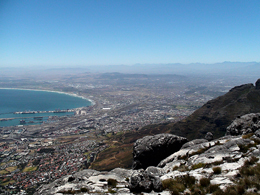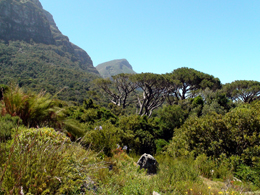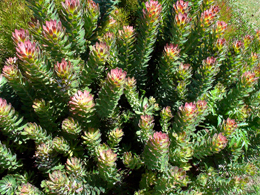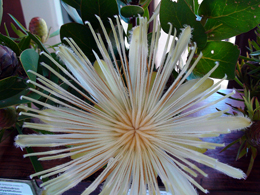Capetown |
 |
<<Click to see original |
With the World Cup just months away, many UAE residents will already be planning their summer break to take in the football, as well as some of the other sights of South Africa. As Brian Salter discovers, nature and outdoor lovers are sure to find Cape Town and its surrounds of great interest with its rich flora and fauna…
Talk about nature at its very best! It doesn't seem to matter where you go in Southern Africa; the sheer variety of plants and birds and wildlife generally has to be seen to be believed, especially if you are from the more northerly climes of Europe or the Middle East or even from the sub continent.
The southern coast, in the areas around Cape Town, appears to have everything going for it, with its many parks and nature reserves, each displaying a different aspect of the Cape's biodiversity.

Dominating the city, of course, is Table Mountain and from the top you get spectacular views in all directions with a bird's eye view of the city 1,000 metres below. There's a cable car to get up there (though the more intrepid could consider hiking their way to the top!) and once there you can follow paths to various look-outs, make use of the telescopes and watch the sunset for a perfect end to a day. Here you will find over 250 species and a variety of buck, baboons and other animals. You'll need at least two hours up there to do the place justice.

But though Table Mountain is on every tourist's agenda, you simply shouldn't miss out on what has to be one of the most amazing botanical gardens anywhere in the world. Kirstenbosch is nestled at the foot of Table Mountain on its eastern slopes, one of eight National Botanical Gardens covering five of South Africa's six different bio zones. When it was founded in 1913 specifically to preserve the country's unique flora, Kirstenbosch was the first botanical garden in the world with this ethos. Unlike other botanical gardens across the world, only indigenous plants are cultivated here.
Kirstenbosch covers an area of 528 hectares with 36 hectares of cultivated garden, the remainder being a natural flora reserve. You can see fully a quarter of South Africa's 20,000 indigenous plant life here, and close to a half of the species native to this region. In the cultivated area, related plants are grouped together and radiate from the central lawns like the spokes of a wheel.
Here you will come across the Cycad Amphitheatre, which hosts many types of these 'living fossils' (so-called because they have remained unchanged for over 200 million years).

The famous Protea Garden lies on the higher slopes, with a profuse growth of silver trees and a number of different varieties on display, including, of course, the national flower, the King Protea (Protea cynaroides). The best time to see proteas is during South Africa's winter – which by luck is when the World Cup is taking place!

There are also sections devoted to succulents, aloes, pelargonia and ericas, to name but a few; but it doesn't seem to matter when you visit, as there is always a blaze of colour at whatever time of year you go.
Kirstenbosch enjoys great popularity with residents and visitors alike; and many purchase multiple entry cards to enjoy the park throughout the different seasons. From the gardens several trails lead off along and up the mountain slopes and these are much used by walkers and mountaineers alike. One of the trails, up a ravine called Skeleton Gorge, is an easy and popular route to the summit of Table Mountain.
Another must-see attraction for nature lovers can be found at the seaside town of Hermanus, approximately an hour and a half away from Cape Town. The area has a reputation for offering the best land-based whale watching in the world. From May onwards Southern Right Whales visit these warm, shallow waters in order to calf their young and to mate. These whales are each about the size of a bus and weigh up to 80 tonnes, perhaps reaching 18 metres long. They also have the largest testes and penises of any living creature, longer than 14 per cent of their overall body length! Yet despite their size, they are also agile and active animals, and their acrobatic antics can keep whale watchers amazed and entranced for hours. Visitors, keen to spot a whale or two from as close as 20 metres away, need only to walk along the cliff path that stretches for 12km from one end of town to the other.
- KirstenboschGarden is open 365 days a year from 08:00 - 18:00. Entrance is R30 (AED15) or R5 for children ages 6-18. Children under 6 years are free.
- Tickets for TableMountain Cableway can be bought online for R170 (AED85) or R90 for children under 18 (http://tablemountain.net/buy_tickets). The first cable car leaves at 8am, whilst the last descends about 15 minutes after sunset.
- Hermanus is about 120 km from Cape Town. Take the N2 eastbound; travel past Somerset West and Grabouw; and at Bot River take the R43 travelling for about 30 km, whence the road will lead directly into the centre of Hermanus
